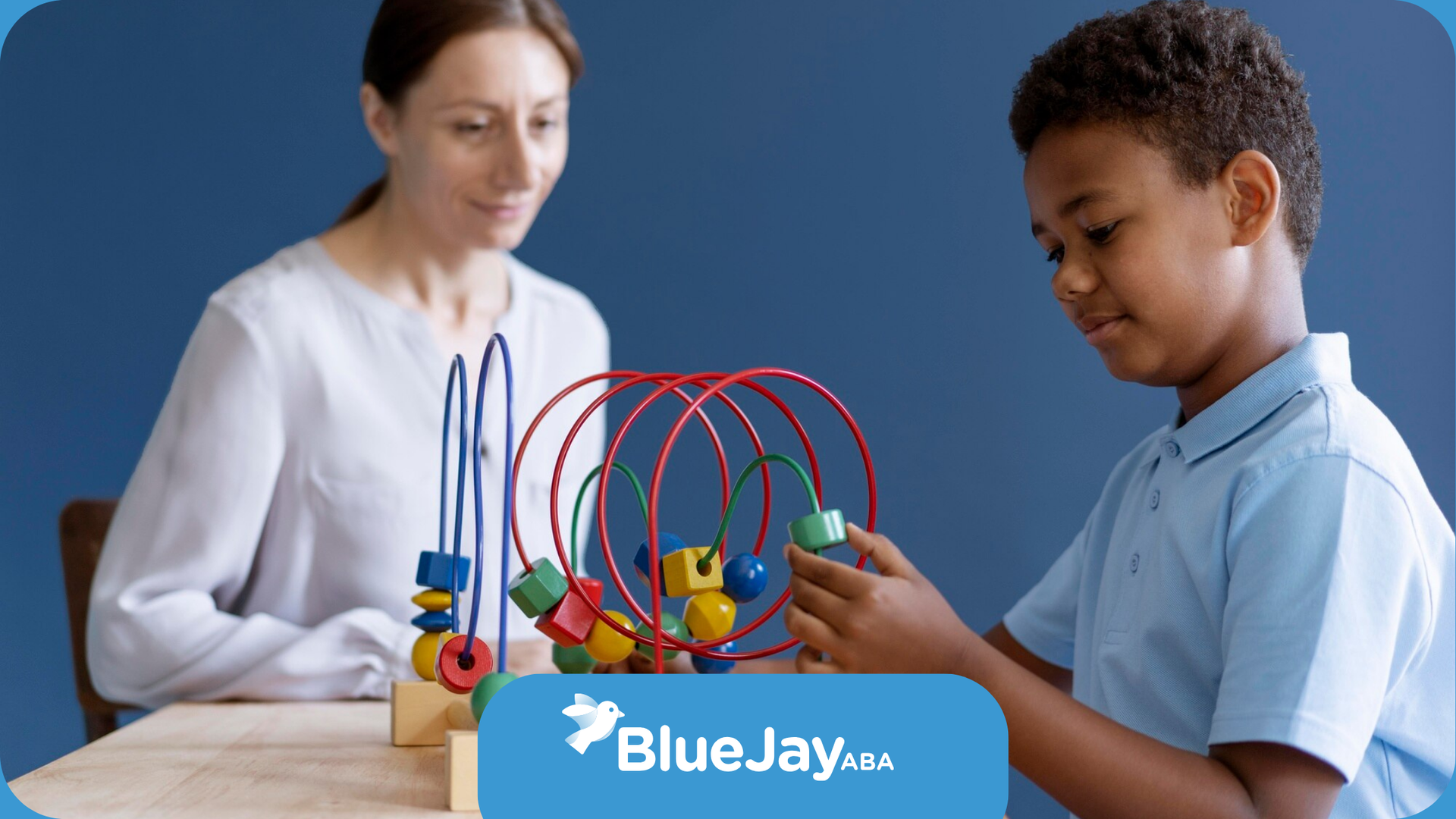How to Implement Natural Environment Teaching
ABA therapy has significantly advanced our approach to supporting individuals with autism spectrum disorders. Among its diverse methodologies, Natural Environment Teaching (NET) stands out. NET emphasizes teaching essential skills in natural settings, using the child's daily life experiences as learning opportunities. This method seamlessly blends learning with everyday activities, promoting the practical application and generalization of skills.
The Essence of Natural Environment Teaching (NET)
Natural environment teaching (NET) emphasizes teaching skills in natural settings like a child's daily routines to enhance their development. By integrating behavior analysis and NLP strategies, NET targets essential skills such as communication and socialization. This approach utilizes the child's natural environment and interests, providing continuous assessment and reinforcement. NET focuses on incidental teaching and positive reinforcement, promoting skill development in diverse settings to ensure generalization and applicability in various real-world scenarios.
Defining NET in the Context of ABA Therapy
Natural Environment Teaching (NET) is a specialized approach within Applied Behavior Analysis (ABA) therapy that distinguishes itself through its naturalistic and child-centered methodology. While ABA therapy encompasses a wide range of techniques, NET specifically emphasizes teaching essential skills in the context of a child’s everyday life.
In contrast to more structured ABA methods like Discrete Trial Training (DTT), which often occur at a table with direct prompts and artificial rewards, NET takes advantage of naturally occurring situations and activities. This means that instead of sitting down for a formal lesson on requesting, a child might learn to request their favorite snack during snack time.
By embedding teaching opportunities within daily routines and play, NET promotes a more organic and engaging learning experience. This approach makes learning feel less like work and more like a natural part of the child's daily life.
Key Principles Behind NET
One of the core principles of NET is its reliance on positive reinforcement. Rather than using punishment or correction, NET focuses on rewarding desired behaviors. These rewards are often natural consequences of the behavior itself, such as a child receiving the toy they requested after using their words.
Another key principle is the emphasis on pivotal behaviors, as seen in pivotal response training. These are behaviors that, when learned, can have a cascading effect on other areas of development. For example, teaching a child to initiate communication can lead to improvements in social interactions, play skills, and emotional regulation.
Finally, NET frequently uses incidental teaching methods. This involves creating learning opportunities within the context of the child's natural activities. If a child is playing with building blocks, a therapist might use that opportunity to teach colors, counting, or spatial reasoning.
Preparing for NET Implementation
Successfully implementing NET requires careful planning and preparation. Before diving into teaching, it's essential to thoroughly understand the child's individual needs, interests, and current skill set. This information forms the foundation for developing effective teaching strategies tailored to the child.
Carefully observing the child in their natural environment is crucial. This helps identify existing routines, preferred activities, and potential learning opportunities within everyday situations. This information allows therapists and caregivers to seamlessly integrate teaching into the child's existing framework.
Identifying Learning Opportunities in Natural Settings
One of the hallmarks of NET is its ability to transform everyday situations into valuable learning experiences. By carefully observing a child's daily routines and preferences, therapists and caregivers can pinpoint a wealth of opportunities to foster skill development.
Consider a simple activity like mealtime. It presents a prime opportunity to target various skills. For instance, a child might work on requesting desired foods, using utensils, or engaging in simple conversation with family members. Similarly, bath time can be used to teach body parts, following instructions, or even sequencing skills.
The key is to be creative and view daily life through the lens of learning. Each interaction, no matter how small, holds the potential for growth and development when approached with a thoughtful and observant eye.
Integrating Interests and Play into Teaching
Play is not just a source of joy and entertainment for children; it's a powerful tool for learning. NET recognizes this by emphasizing the importance of integrating a child's interests and playtime into teaching strategies. This approach creates a naturally engaging and motivating environment where learning becomes an extension of play.
Imagine a child who is fascinated by building blocks. A therapist or caregiver skilled in NET might use this interest to teach a variety of concepts. They could introduce language by labeling the blocks' colors and shapes, fostering social skills by encouraging collaborative building, or even work on motor skills by having the child stack and arrange the blocks.
By incorporating play into therapy sessions, NET ensures that learning is not a separate, isolated activity but rather an enjoyable and organic part of the child's natural environment. This strategy harnesses the power of intrinsic motivation, making learning feel less like work and more like a fun and rewarding experience.
Strategies for Effective NET
Successfully implementing NET involves mastering specific strategies that differentiate it from other ABA approaches. Understanding and utilizing these strategies effectively is key to maximizing the benefits of NET for the learner.
The following sections will explore in depth three key strategies that drive successful NET implementation. These include incidental teaching, prompting and fading techniques, and engaging through the natural language paradigm. Mastering these methods is essential to unleashing the full potential of NET in teaching and promoting skill development.
Utilizing Incidental Teaching Methods
Incidental teaching is a cornerstone of NET, focusing on capitalizing on naturally occurring moments within a child's day to enhance communication skills and other targeted behaviors. It's a fluid and adaptable approach that seamlessly blends learning with everyday activities.
Here's how it works within the framework of ABA therapy:
- Observe and Identify: Therapists or caregivers closely observe the child's interests and current activities, identifying natural opportunities to introduce or reinforce skills.
- Create a Need: The adult arranges the environment to create a need for the child to communicate or practice the desired skill. For example, they might put a desired toy within sight but out of reach, prompting the child to request it.
- Prompt and Reinforce: The adult uses prompts, such as verbal cues or gestures, to encourage the child to use the target skill. Correct responses are immediately reinforced with praise, access to the desired item, or other natural consequences.
Incidental teaching thrives on spontaneity. It uses the child's immediate environment and interests to make learning a fun and engaging experience, seamlessly blending education with real-life interactions.
Implementing Prompting and Fading Techniques
Prompting and fading is a fundamental technique used across various ABA therapy approaches, including NET. It involves providing varying levels of support to help a child acquire new skills and gradually reducing that support as they master the behavior. Positive reinforcement plays a vital role throughout this process.
Initially, a therapist might use physical guidance to help a child complete a task, such as pointing to the correct picture or imitating an action. As the child begins to grasp the skill, the therapist gradually fades the level of prompting, perhaps moving to a gesture prompt like pointing in the right direction.
The ultimate goal is to fade prompts entirely so that the child can perform the skill independently. Successful fading is a carefully orchestrated process, with the therapist continuously assessing the child's progress and adjusting the level of support accordingly. The use of positive reinforcement throughout encourages the child and celebrates their growing independence.
Engaging Through Natural Language Paradigm (NLP)
Engaging through natural language paradigm (NLP) involves utilizing the principles of behavior analysis in natural settings, such as a child's daily life or during everyday activities. By incorporating NLP strategies like incidental teaching and pivotal response training, caregivers can enhance communication skills in a child's natural environment. This approach focuses on skill development within the context of the child's life, using positive reinforcement to encourage new skills and socialization. Continuous assessment and building blocks in the child's natural environment are integral to successful NLP implementation.
Overcoming Challenges in NET
While NET offers numerous benefits, implementing it effectively does come with its own set of challenges. These challenges can range from addressing common misconceptions about the approach to overcoming potential barriers to generalization.
Successfully navigating these challenges requires a thorough understanding of the principles of NET, open communication between therapists or caregivers and families, and a commitment to ongoing assessment and flexibility.
Addressing Common Implementation Barriers
One of the first hurdles in implementing NET is addressing common misconceptions. Some may mistakenly perceive NET as less structured or less data-driven than other ABA methods, like DTT. It's crucial to clarify that NET still relies on careful planning, individualized goals, and consistent data collection to track progress.
Another challenge is ensuring generalization. Since teaching happens in natural environments, it can be tempting to assume that generalization will occur automatically. However, actively planning for generalization across different settings and individuals is vital.
Therapists and caregivers can overcome these challenges by clearly communicating the principles of NET, providing concrete examples of how data is collected and used, and working collaboratively with families to create opportunities for generalization beyond the structured ABA sessions.
Customizing NET to Individual Learner Needs
NET, like all effective ABA therapies, thrives on its capacity for individualized application. Recognizing that each child on the autism spectrum is unique, with their own strengths, challenges, and preferences is key to successful NET implementation. This necessitates a highly customized approach.
Begin by conducting a thorough assessment of the learner's skills, interests, and preferred learning styles. This information will guide the selection of appropriate teaching targets, the design of engaging activities, and the identification of natural reinforcers that will resonate with the individual child.
Adapt teaching methods and materials to align with the learner's natural environment. What works for one child in their home setting may not be as effective for another. Creativity and flexibility are paramount in tailoring NET to meet the unique needs of each individual.
Measuring Success in NET
In any therapeutic intervention, measuring progress is crucial. NET, despite its naturalistic setting, emphasizes the importance of continuous assessment to determine if targeted interventions are effectively achieving the desired outcomes.
By tracking progress, therapists and caregivers can make data-informed decisions about adjusting teaching strategies, introducing new skills, or addressing any emerging challenges. This data-driven approach is central to ensuring the effectiveness of NET and maximizing the child's learning potential.
Key Indicators of Progress
Measuring progress in NET involves continuous assessment, focusing on how the child applies the targeted skills in their natural environment. While traditional ABA methods might rely heavily on discrete trial data, NET success is evaluated through a broader lens, considering the child's overall functional improvement.
One key indicator of progress is the generalization of learned skills. For example, if a child learns to request a snack during their ABA therapy session, success is demonstrated when they spontaneously use the same skill at home with their family.
Observing the frequency, independence, and complexity of the targeted skills is crucial. Noting how often a child initiates communication, completes a task without prompting, or uses a skill in a new and creative way provides valuable insight into their progress and guides ongoing intervention planning.
The Role of Data Collection and Analysis
Although NET occurs in natural settings, rigorous data collection remains a cornerstone of this ABA therapy approach. Data collection in NET goes beyond simply tracking correct and incorrect responses. It involves carefully documenting the child's performance across various settings and situations to understand the true impact of the intervention. Therapists collect data on:
| Data Point | Description |
|---|---|
| Frequency | How often a behavior occurs. |
| Duration | How long a behavior lasts. |
| Intensity | The severity or force of a behavior. |
| Latency | The time between a prompt and the response. |
This information guides ongoing treatment decisions, helping therapists and caregivers understand which strategies are effective, identify potential roadblocks to progress, and personalize interventions to address the child's evolving developmental challenges.
If you're searching for effective
autism therapy near you, it's important to consider the expertise of local providers who specialize in Natural Environment Teaching (NET). NET offers a unique, real-life learning approach that integrates therapy into daily activities, making it more relatable and effective for children. Explore how a specialized ABA therapy center can help your child thrive in a natural setting. Reach out to learn more about tailored autism support and how it can make a difference in your child’s development.
Conclusion
In conclusion, Natural Environment Teaching (NET) stands as a dynamic method in ABA therapy that harnesses the power of natural settings to enhance learning. By integrating play, interests, and prompt-fade strategies, NET ensures engagement and personalization for each learner. Overcoming implementation barriers and customizing NET to individual needs are pivotal for success. Data-driven progress tracking and involving parents in the process further elevate the effectiveness of NET. Embracing this approach with diligence and flexibility can lead to remarkable strides in skill development and independence for learners. Explore the possibilities of NET to unlock the full potential of tailored, experiential learning experiences.
Blue Jay ABA offers specialized ABA therapy tailored to each child's needs, including natural environment teaching (NET) strategies that help children with autism learn in real-life situations. By embedding teaching moments into everyday activities, we make learning more meaningful and effective. If you're looking to explore how NET can benefit your child,
connect with us today for a consultation and discover how we can support your child’s growth.
Frequently Asked Questions
What are the first steps in starting NET?
The initial steps in NET involve an ABA therapist or caregiver identifying the learner's interests, strengths, and needs. This assessment guides the development of individualized goals and the selection of natural settings and activities that will be both motivating and conducive to learning for those with developmental disabilities.
How can parents be involved in NET?
Parents are vital to NET, integrating ABA therapy techniques into daily routines. They can reinforce learned skills at home, provide opportunities for socialization, and offer natural positive reinforcement, creating a consistent and supportive environment for their child.
What adjustments might be needed for different learners?
NET embraces an individualized approach. Therapists tailor ABA therapy strategies according to the learner's specific needs and adapt teaching methods to suit their developmental challenges, ensuring that learning remains engaging and effective within the context of the learner’s natural environment as they master essential skills.
Can NET be used for older learners?
Absolutely! NET is adaptable and beneficial across age groups. For older learners on the autism spectrum, ABA therapy through NET can focus on vocational skills, social interactions, and independent living, all taught within a natural context, supporting lifelong learning and growth.
Need Assistance?
We’re Here to Help
Our expert team is ready to support your child’s development and well-being.
We are committed to offering tailored ABA therapy solutions that promote growth.
Contact us today for Professional ABA Therapy.
Related Posts
MENU
GET IN TOUCH
STAY CONNECTED
Join our newsletter and find out more
NewsletterFooter
We will get back to you as soon as possible
Please try again later








